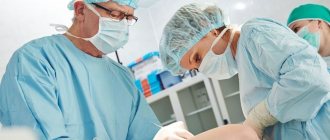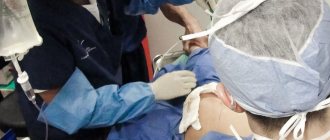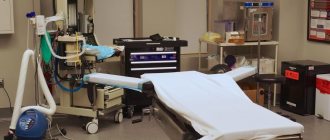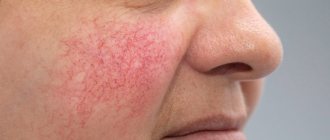Contacts
State healthcare institution "Orenburg Regional Clinical Psychoneurological Hospital of War Veterans"
Reception 8 (3532) 56-03-10 FAX 8 (3532) 56-03-10
Chief physician – Honored Doctor of the Russian Federation, Candidate of Medical Sciences Vladimir Mikhailovich Sukach
Reception for personal matters: Monday from 16-00; Wednesday until 17-00
Deputy Chief Physician for Organizational and Economic Work, Candidate of Medical Sciences Zhukov Sergey Gavrilovich
8(3532) 56-03-10
Deputy Chief Physician for Medical Affairs – Dmitry Mikhailovich Malygin
8(3532) 56-03-10
Deputy Chief Physician for Examination of Temporary Disability - Lyudmila Ivanovna Rukavishnikova
8(3532) 56-03-10
Head of the consultative and diagnostic clinic, chief freelance specialist of the Ministry of Health of the Orenburg Region for medical care of war veterans - Irina Vyacheslavovna Golovina
8(3532) 56-03-15
Head of the technical department - Sergey Vasilievich Volodin
8(3532) 56-01-87
Chief nurse - Honored Health Worker of the Russian Federation , Lidiya Ivanovna Petrova
8(3532) 56-15-06
Department of Ultrasound and Functional Diagnostics - Head Alexey Efimovich Polosov
8 (3532) 67-63-57
Operating unit - head of the department, Honored Doctor of the Russian Federation, Evgeniy Aleksandrovich Yashin
8(3532)56-01-85
Department of Surgery – Head Zagidullin Ruslan Shamilevich
8(3532) 56-02-75
Orenburg Regional Center for Plastic Reconstructive and Surgery (OCSRPO)
8(3532) 56-03-29
Urology Department - Head Andrey Ivanovich Belyaev
8(3532) 56-01-85
Department of Anesthesiology and Reanimation (OAR) – Head, Candidate of Medical Sciences Bredikhin Alexander Yurievich
8(3532)56-01-93
Geriatric Department - Head, Chief Freelance Specialist of the Geriatric Ministry of Health of the Public Organization, Ershov Vladimir Borisovich
8(3532)56-01-80
Cardiology department - head Klochkov Alexey Igorevich
8(3532) 56-02-78
Neurological Department - Head, Honored Doctor of the Russian Federation , Koldaev Yuri Grigorievich
8(3532) 56-02-95
Department of Medical and Psychological Rehabilitation and Psychotherapy – Head Viktor Viktorovich Emelyanov
8(3532) 56-02-95
Endoscopic department - head Mokritsky Ivan Lyubomirovich
8(3532) 56-01-36
Palliative care department - head Svetlana Petrovna Kotlyarova
8(3532) 56-18-55
X-ray room of the hospital - head Pleshakov Vadim Evgenievich
8(3532) 56-03-10
Help Desk - 8(3532) 56-03-18
A criminal case was opened in St. Petersburg after the death of a patient at Atribeaute Clinique
The Main Investigation Department (GID) of the RF Investigative Committee for St. Petersburg opened a criminal case for improper provision of services after the death of a 31-year-old woman at the Atribeaute Clinique plastic surgery clinic. According to the general director of the medical center, Alexander Efremov, the aesthetic surgery was planned, and before this the patient passed all the necessary tests.
Facial surgery took place on August 25, 2022. As Alexander Efremov told the media, it was almost completed, but suddenly the woman’s temperature rose sharply - up to 42 degrees.
“During the operation everything went according to plan. At the end, the patient experienced a sharp rise in temperature. Our anesthesiologists with 30 years of experience explain: this is a rare case, it can happen in 200 thousand people. This is a genetic feature,” Efremov told REN TV. He clarified that an ambulance arrived at the clinic, but it was still not possible to save the patient: “As I understand it, the heart simply couldn’t stand it.”
A criminal case was initiated under paragraph “c” of Part 2 of Art. 238 of the Criminal Code of the Russian Federation (provision of services that do not meet the requirements for the safety of life and health of consumers, resulting in the death of a person through negligence). The regional prosecutor's office monitored the progress and results of the investigation.
According to SPARK-Interfax, Academy of Plastic Surgery LLC (the legal entity of the clinic) was registered in 2011 in St. Petersburg. In 2022, the company's revenue amounted to 187.9 million rubles, profit - about 17 million rubles. The co-owners of the LLC are Boris Gorbachev (35%), Vitaly Zholtikov (35%), Alexander Efremov (10%), Natalya Korableva (9%), Alexander Drevetsky (6%) and Larisa Akopyan (5%). One of the co-owners and founders of the clinic, Vitaly Zholtikov, heads the Russian section of the largest International Society of Aesthetic Plastic Surgery (ISAPS).
Patients of plastic surgery clinics often encounter complications after operations, and deaths also occur. In 2022, Order No. 298n of the Ministry of Health came into force, which was designed to reduce the number of undesirable outcomes of plastic surgery. The document stipulates that specialized medical institutions must have a hospital, CT and MRI machines, and intensive care. After the order came into force, Roszdravnadzor began to inspect clinics that have the appropriate license. However, those that conduct their activities underground did not come under supervision.
For example, in the summer of 2022, a 62-year-old patient died at the St. Petersburg clinic of aesthetic medicine “Anna”, after whom the doctor and at the same time the owner of the medical institution, Guram Papiashvili, performed surgery to correct age-related changes in the face and blepharoplasty. Meanwhile, the clinic’s doctors did not have the right to carry out such a procedure. A criminal case was initiated under paragraph “c” of Part 2 of Art. 238 of the Criminal Code of the Russian Federation. In January 2021, a 49-year-old woman died after liposuction at the VIP clinic Amina in Ingushetia. According to the Investigative Committee, the operation to correct body contours was carried out in the absence of the necessary conditions. Based on this fact, a case was also initiated under paragraph “c” of Part 2 of Art. 238 of the Criminal Code of the Russian Federation.
The chief freelance plastic surgeon of the Ministry of Health of the Russian Federation, Natalya Manturova, who initiated changes in the field of plastic surgery, believes that the new working conditions of specialized clinics have brought positive results. “In fact, after the tightening and the issuance of a strict Order in the shortest possible time, we no longer observed such a number of deaths,” she said, clarifying that “clinics that meet all the requirements have worked and continue to work.”
Manturova admitted that some specialists who lost their jobs due to the closure of medical institutions that did not meet the requirements continue to receive patients in unsuitable premises. In her opinion, this is not a consequence of the new rules. “Well, listen, this is a matter of conscience for each specialist and a matter of preparing the patient and attitude towards their health. We cannot be blamed for not guiding patients through the necessary steps when choosing a clinic. At every round table, at all kinds of meetings, we repeat: do not hesitate to pay attention to the availability of a diploma, license, equipment, and reviews. At least ask what [the doctor’s] work experience is, ask if [the clinic] has an anesthesiology service,” Manturova emphasized.
Source: Main Investigative Directorate of the Investigative Committee of the Russian Federation for St. Petersburg
plastic surgery death anesthesiologist attribute attribute plastic surgery plastic surgery Zholtikov
Subscribe to our channel in Telegram Subscribe to our channel in Yandex Zen
Share on social networks
+1 +1 +1 +1
Cosmetic blepharoplasty
Home / Patients / Services
With age, the skin of the upper and lower eyelids loses its tone and elasticity, droops and sags; drooping eyelids and the accompanying swelling are characteristic of both men and women. Drooping eyelids give the face a tired and sad look, visually making the person older.
Blepharoplasty is aimed at eliminating swelling and sagging skin around the eyes, adjusting the contour of the eyelid and eliminating bags under the eyes. The main goal of such operations is smoother and firmer skin, which in turn gives the face an overall fresher and more youthful appearance. In some cases, in addition to the cosmetic effect, blepharoplasty is performed to improve vision, in cases where a drooping eyelid significantly limits the field of vision.
Cosmetic blepharoplasty
Cosmetic blepharoplasty pursues exclusively aesthetic purposes; the operation is performed in the absence of medical indications, only to improve appearance. Most often, operations are aimed at eliminating bags under the eyes and drooping upper and/or lower eyelids. The operation takes from one to three hours. After the recovery period is completed, the look becomes clearer and more open, the eyelids are lifted, and the face visually becomes younger and fresher. The recovery period takes four to six weeks. Weakening of the muscles that support the eyelid, stretching of the skin and the formation of bags under the eyes can often be caused by a hereditary factor.
Cosmetic blepharoplasty can be used for severe sagging skin around the eyes due to age-related skin changes, allergic reactions or swelling of the eyelids.
The operation of blepharoplasty can involve from one specialist to several surgeons of different specializations: ophthalmologists and oculoplastic surgeons, a wide range of plastic surgeons specializing in facial plastic surgery.
Functional blepharoplasty
Functional blepharoplasty, unlike cosmetic blepharoplasty, is performed for medical reasons. Most often, such operations are aimed at removing excess skin, which, hanging over, prevents a person from seeing, thereby making it difficult to carry out everyday activities, wearing glasses, contact lenses, and driving.
Other medical indications for functional blepharoplasty include the following conditions:
- Skin irritation caused by friction of the folds of the eyelid.
- Inability of the muscles to maintain the eyelid in proper position.
Functional blepharoplasty, like cosmetic blepharoplasty, is performed by ophthalmologist and oculoplastic surgeons.
Ptosis and eyelid surgery
Ptosis is the medical term for drooping of the upper eyelids in one or both eyes. In medicine, there is a phenomenon of congenital ptosis, in which case the edge of the upper eyelid falls below its normal position.
In some cases, the edge of the upper eyelid drops so low that it covers part of the pupil, which negatively affects the sharpness of vision. In the vast majority of cases, drooping of the upper eyelid occurs due to age-related changes. The muscle tendon responsible for raising the eyelid stretches over time, and the eyelid droops; the process of surgical correction of a drooping eyelid, among other things, involves “repairing” the stretched tendon.
It is common for the eyelid to droop after cataract surgery or other eye surgeries that weaken the muscle that supports the eyelid. Ptosis can also be a consequence of a stroke or previous trauma.
A referral for functional as well as aesthetic blepharoplasty can be obtained from an ophthalmologist after an examination and the necessary tests.
Before resorting to blepharoplasty for aesthetic reasons, you should understand that such an operation can only improve the condition of the eyelid skin to a certain extent, and not make you ten years younger. The expected result must correspond to the real state of affairs; moreover, one should not forget that age-related changes in the body cannot be stopped by any plastic surgery and the result of an eyelid lift will disappear sooner or later. As a rule, people who have once had a surgical eyelid lift repeat this procedure over time. Maintaining the result of blepharoplasty depends on the individual characteristics of the patient’s body, but on average the result lasts up to ten years.
Risks and complications
The doctor must familiarize the patient with the risks and contraindications associated with blepharoplasty. For example, the presence of certain diseases and their form can become a serious contraindication to surgery.
In smokers, the likelihood of postoperative complications increases due to slower recovery processes. Therefore, smokers are advised to stop smoking about a few weeks before surgery and not smoke for at least two to three weeks after it.
Some medical journals indicate blindness among the complications of blepharoplasty, but such cases occurred at the dawn of plastic surgery; modern technologies almost completely eliminate vision loss after blepharoplasty.
You may also experience temporary excessive dryness of the eyes and an inability to close the eye after surgery. In such cases, eye drops and moisturizing preparations are prescribed, and after two to three months the full functioning of the eyelid is restored.
Blepharoplasty, in the hands of an experienced and qualified specialist, is a completely safe procedure, but on the other hand, like any surgical procedure, it is associated with certain risks.
Specifics of the operation
When performing blepharoplasty under local anesthesia, the patient is conscious, and the area around the eyes loses sensitivity under the influence of anesthesia, which is administered by injection. The effect of local anesthesia can be enhanced by taking sedatives, either orally or intravenously.
General anesthesia is used for complex operations, or in cases where blepharoplasty is combined with other plastic surgeries. Blepharoplasty is performed on the lower or upper eyelids or both eyelids at once.
During the operation, incisions are made along the contour of the natural folds of the eyelid, which are located in the crease of the upper eyelid and directly under the eyelashes of the lower eyelid. The stitches after such incisions do not leave noticeable scars; in fact, they are not visible at all.
The surgeon first makes marks on the eyelid in areas where skin and fat cells need to be removed. In some cases, part of the muscle tissue is also removed. Excess tissue and fat cells are removed using surgical instruments, scalpels, surgical scissors, radio frequency and laser devices. The amount of muscle tissue and/or fat cells to be removed is determined based on the preoperative examination, as well as factors such as muscle and bone structure and the natural symmetry of the eyebrows.
Blepharoplasty, as a rule, does not cause severe discomfort in the postoperative period and does not require additional painkillers. Bruising, swelling and watery eyes are normal, and your eyes may feel dry for a few weeks after surgery. Blepharoplasty can worsen the condition of patients who permanently suffer from watery eyes; this state of affairs can persist for a month or two after the operation; at this time it is highly not recommended to wear contact lenses.
During the first time after surgery, some patients experience difficulty closing their eyes; some initially cannot close their eyes at all. There is no need to worry; in a week, other functionality of the eyelid will be restored.
Within 4-6 weeks after blepharoplasty, skin tightness in the area of the sutures, a feeling of discomfort and mild pain are felt; such phenomena disappear within six months after the operation.
Complications such as bleeding, suture dehiscence, or infection after blepharoplasty are extremely rare.
Postoperative swelling can affect vision to a certain extent, and some patients may need glasses after surgery, but in most cases, age, not surgery, is to blame for vision deterioration. If the deterioration in vision is caused by swelling, after the swelling disappears, vision improves.
Recovery period after blepharoplasty
After blepharoplasty, to reduce the risk of infection, the surgical site is lubricated with a topical antibiotic. On the first day after surgery in the morning, it is recommended to apply cold compresses to the eyes for 10-15 minutes and, if possible, do such compresses every hour. Ice reduces swelling and bruising. On the second day, cold compresses should be applied every few hours.
48 hours after surgery, warm compresses are used to stimulate tissue repair processes. Puffiness and bruising under the eyes, as well as bloodshot whites of the eyes, are normal. The complete healing process takes several weeks, during which it is not recommended to use cosmetics and special creams under the eyes.
Contact lenses can be worn after the swelling goes away, glasses can be put on the very next day after surgery, the main thing is to do it carefully.
You can make an appointment in advance and get more information by calling:
8
Every day from 8:30 to 17:00 (Mon. - Thurs.), from 8:30 to 16:00 (Fri.).
Make an appointment









